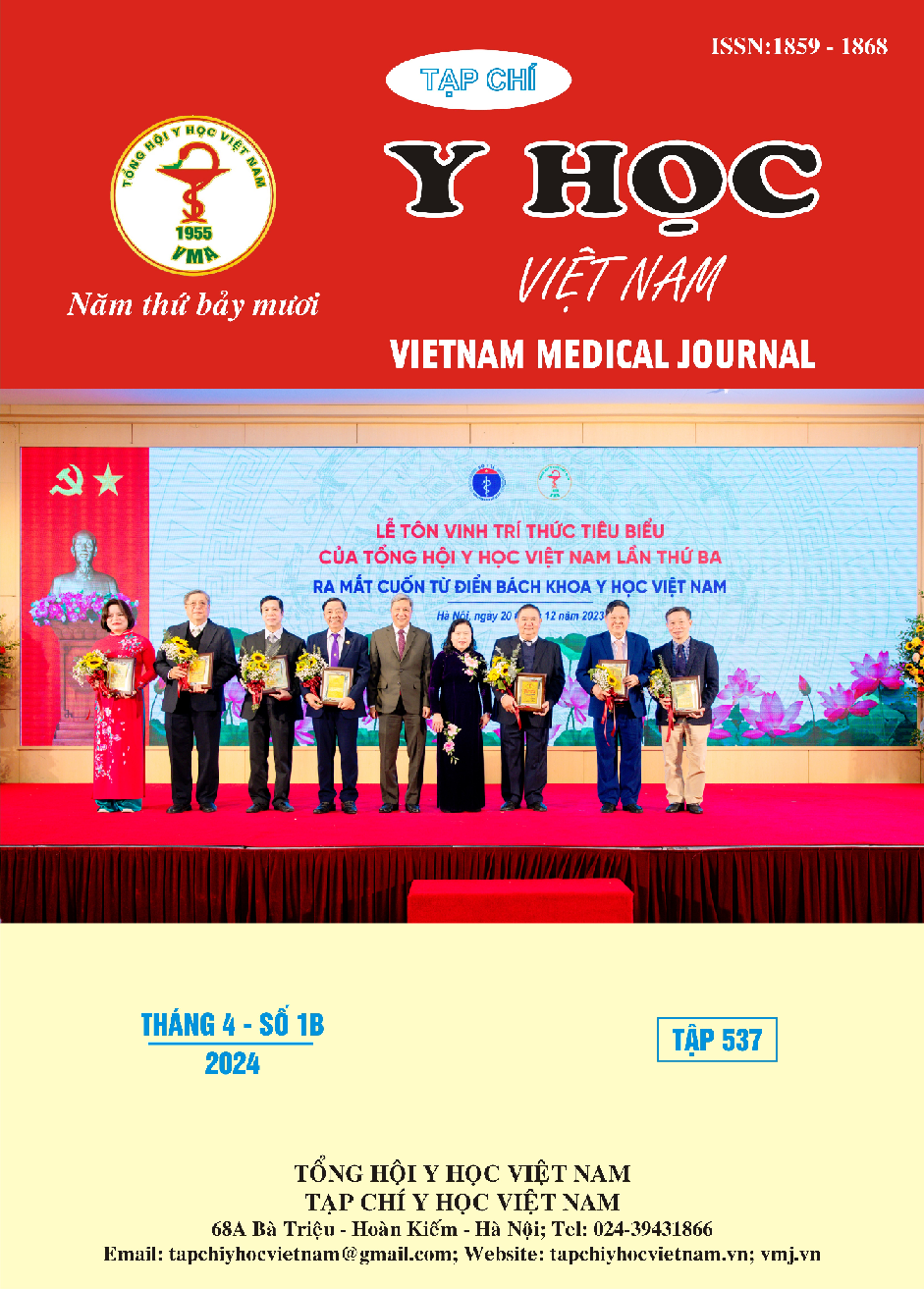ULTRASOUND IMAGING CHARACTERISTICS IN PREDICTING PLACENTA ACCRETA AT HANOI OBSTETRICS AND GYNECOLOGY HOSPITAL
Main Article Content
Abstract
Objectives: Description of ultrasound images of placenta accreta at Hanoi Obstetrics and Gynecology Hospital. Subjects and methods: Retrospective descriptive study of 76 pregnant women diagnosed with placenta accreta and cesarean section scars treated at Hanoi Hospital. Results: Research on 76 pregnant women diagnosed with placenta accreta at Hanoi Obstetrics Hospital. The rate of placenta accreta, increta, percreta are 18.4%; 73.7% and 7.9% respectively. The proportion of pregnant women with ultrasound images showing abnormal lacuna in the placenta, loss of retroplacental “clear zone”, placental bulge, and signs on color doppler are 59.2%,86.8%, 6.6% and 84.2% respectively. Lacunae signs, placental bulge signs and doppler signs appear at an increasing rate with the severity of placenta accreta with a statistically significant difference, p < 0.01. There was a statistically significant difference in the rate of placenta accreta, increta, percreta between the group with 2, 3 or 4 signs or more on ultrasound, compared with the group without 2, 3 or 4 signs or more on ultrasound with p < 0.05. Conclusions: Signs of loss of retroplacental “clear zone”and signs of increased vascularity in color doppler mode are the most common signs in placenta accreta. There is a statistically significant difference when combining 2 ultrasound signs in classifying placenta accreta.
Article Details
Keywords
Placenta accreta, Placenta praevia, Ultrasound, Doppler ultrasound
References
2. G. Garmi andR. Salim (2012). Epidemiology, etiology, diagnosis, and management of placenta accreta. Obstet Gynecol Int, 2012, 873929.
3. S. Wu, M. Kocherginsky andJ. U. Hibbard (2005). Abnormal placentation: twenty-year analysis. Am J Obstet Gynecol, 192 (5), 1458-1461.
4. R. Faranesh, S. Romano, E. Shalev et al (2007). Suggested approach for management of placenta percreta invading the urinary bladder. Obstet Gynecol, 110 (2 Pt 2), 512-515.
5. G. M. Mussalli, J. Shah, D. J. Berck et al (2000). Placenta accreta and methotrexate therapy: three case reports. J Perinatol, 20 (5), 331-334.
6. B. Poljak, D. Khairudin, N. Wyn Jones et al (2023). Placenta accreta spectrum: diagnosis and management. Obstetrics, Gynaecology & Reproductive Medicine, 33 (8), 232-238.
7. T. K. Adu-Bredu, M. J. Rijken, A. J. Nieto-Calvache et al (2023). A simple guide to ultrasound screening for placenta accreta spectrum for improving detection and optimizing management in resource limited settings. 160 (3), 732-741.
8. H. E. Baumann, L. K. A. Pawlik, I. Hoesli et al (2023). Accuracy of ultrasound for the detection of placenta accreta spectrum in a universal screening population. 161 (3), 920-926.
9. N. M. Hùng (2017). Nghiên cứu Kết quả Điều trị rau cài răng lược trên sẹo mổ lấy thai tại Bệnh viện Phụ sản Hà Nội Luận văn Thạc sỹ Y học, Đại học Y Hà Nội.
10. L. X. Thắng (2020). Nghiên cứu kết quả phẫu thuật rau cài răng lược trên bệnh nhân có sẹo mổ lấy thai tại Bệnh viện Phụ sản Hà Nội Luận văn chuyên khoa cấp II, Đại học Y Hà Nội.


